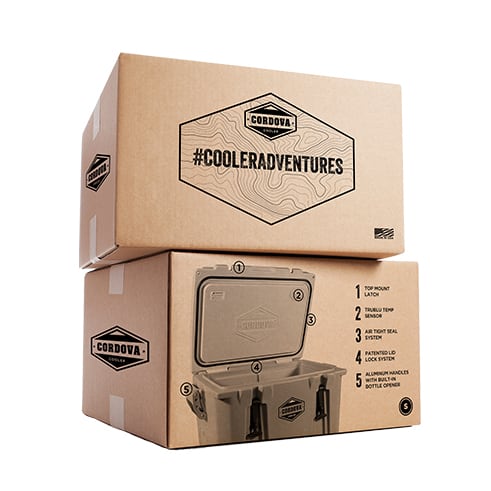Marketers always want to isolate the magic formula: What will make consumers convert? Promo codes, compelling brand storytelling, and exploratory questions like “How did you hear about us?” may show insight into what directly preceded such customer activity, but the reality is that’s just one piece of a complicated puzzle or funnel.
Multi-touch attribution aims to better connect those dots and ultimately drill down into what, in the end, truly prompts customers to take the actions we want them to, whether it’s an actual purchase or signing up for your loyalty program, entering a contest, or just simply visiting your website.
Why Multi-Touch Attribution Matters
The increase in data-driven marketing in recent years provides overwhelming proof that there is no one factor responsible for customer conversion. It’s actually a mix of factors that leads up to a sale, an email list sign-up, a social media follow, or any other sort of action taken by a shopper.
Marketers have long attempted to find exactly what motivates consumers. Digital marketing has taken great strides in this area, making it easy for businesses to identify the closing stages of a transaction thanks to modern conveniences such as unique URLs, online accounts, and QR codes. As helpful as these factors can be, they only tell part of the story.
The truth is identifiers such as these only show marketers the final step of the buyer’s journey. What they don’t see behind a purchase is the protracted period of brand awareness, research, comparisons, reviewing other options, discussing with friends, and any other steps along the buyer’s path to purchase. It’s irresponsible to discard all of this as a combined group of pre-sale activity. And it’s just as careless to assume all of these steps are of equal value.
Multi-touch attribution — also known as fractional attribution — attempts to place a numerical value on the importance of each step of the buyer’s journey. This means that if someone buys a TV at a retail location under your company’s umbrella, the store doesn’t get the entire credit for the sale. Instead, some of that attribution will go to the key decision points along the way.
For example, the company website might get some attribution for its role in helping the buyer decide what features they want in a new TV, and the social media team might receive credit for selling the buyer on the brand itself. At the same time, the store might get additional attribution for showing the buyer various models and helping them to gather the information that led to their eventual purchase.
In the end, multi-touch attribution is a way to make sure every piece of the path to purchase is recognized for the role it played. Of course, the implications for multi-touch attribution don’t end there.
Multi-Touch Attribution Implications
A smart company will take the insights gleaned from multi-touch attribution and put that knowledge to good use. Here are a few ways in which businesses can incorporate what they learn using this approach.
Voice of the Customer
Marketers have struggled to measure ROI across their various channels for decades. And while any multi-touch attribution system will be limited by the metrics of that system (more on that later) this is a great way for companies to determine how much impact each arm of the operation has on consumer activity and, by extension, the bottom line.
This gives marketers the unique opportunity to see what people actually respond to, and to subsequently funnel resources to those areas that are making the most difference in the minds of paying customers. At the same time, companies can reduce their time and money spent in areas that aren’t moving the needle with consumers.
A feedback loop that constantly incorporates this feedback and responds appropriately will do much more than just prove ROI — it’ll make the customer’s path to purchase as effective as it can possibly be.
Elimination of Bias
Even data-driven marketers can struggle with the idea that the numbers might not be in line with their projections, or even with what they want to see. Data shows marketers what’s really happening, so they can respond to actual consumer activity, instead of responding to what they merely think people will do. That’s where multi-touch attribution is an asset.
A business that uses multi-touch attribution can no longer be beholden to biases and preconceived notions. Under this model, the only thing that can be absolute is the data that’s unearthed through the attribution process.
As we saw in the previous example, the numbers brought about by multi-touch attribution will leave no doubt as to what really makes the difference for customers, and marketers will have to accept that and respond to customer desires.
Varying Models
If there’s a flaw to multi-touch attribution, it’s simply that there is no universal standard. Most businesses have relied upon single-touch attribution in the past, whether it be allocating the entire sale to the final customer touchpoint or to the first customer touchpoint. The in-between is where there is variance among multi-touch attribution systems.
Though there are many ways to handle multi-touch attribution, it’s wise to stick with one system for at least a few months, and perhaps longer than that. This is done so that the results actually mean something. If key metrics are constantly invalidated because the scoring model is continuously tweaked, no actual inferences can be drawn from that data. Consistency will give any model value, regardless of how imperfect it might be.
Utilizing Multi-Touch Attribution
There are two main keys to maximizing your use of multi-touch attribution. The first is having the reporting infrastructure to track customer touchpoints and to determine the actual course of action a consumer takes on their unique path to purchase. This is much easier to achieve for digital interactions than it is for offline activity, though tools like QR codes provide an easy way to digitally quantify an in-person store visit.
The second key is the most important about multi-touch attribution, at least in your initial foray into the discipline. Creating your own scoring model is the framework on which the entire attribution system works. There are a variety of ways in which attributions can be accredited, ranging from very simple (each touchpoint gets an equal share of the attribution) to potentially overly complex (machine learning to determine a fair attribution system).
A good place to start is what’s known as a U-shaped attribution system. In this system, the first and last touchpoints get a higher percentage of attribution than the other touchpoints. The theory here is that the initial interaction leads the buyer to develop interest, and obviously, the final touchpoint is the sale itself.
Those two get a bigger share of the attribution because the sale doesn’t happen without those two interactions. Then, everything else in the middle — the bottom of the U — splits a share of what’s left over. This allows your company to recognize the touchpoints along the path to purchase while giving special recognition to those mediums that started and ended the buying process.
Multi-touch attribution is a powerful tool that can help marketing teams of all sizes to become more efficient and better serve customers by better structuring their journey to ultimately give them what they want. The end result is a satisfied and loyal consumer as well as a more productive and strategic marketing plan. If you’d like to learn more about how multi-touch attribution can help your organization, contact us at Commit Agency today.




























